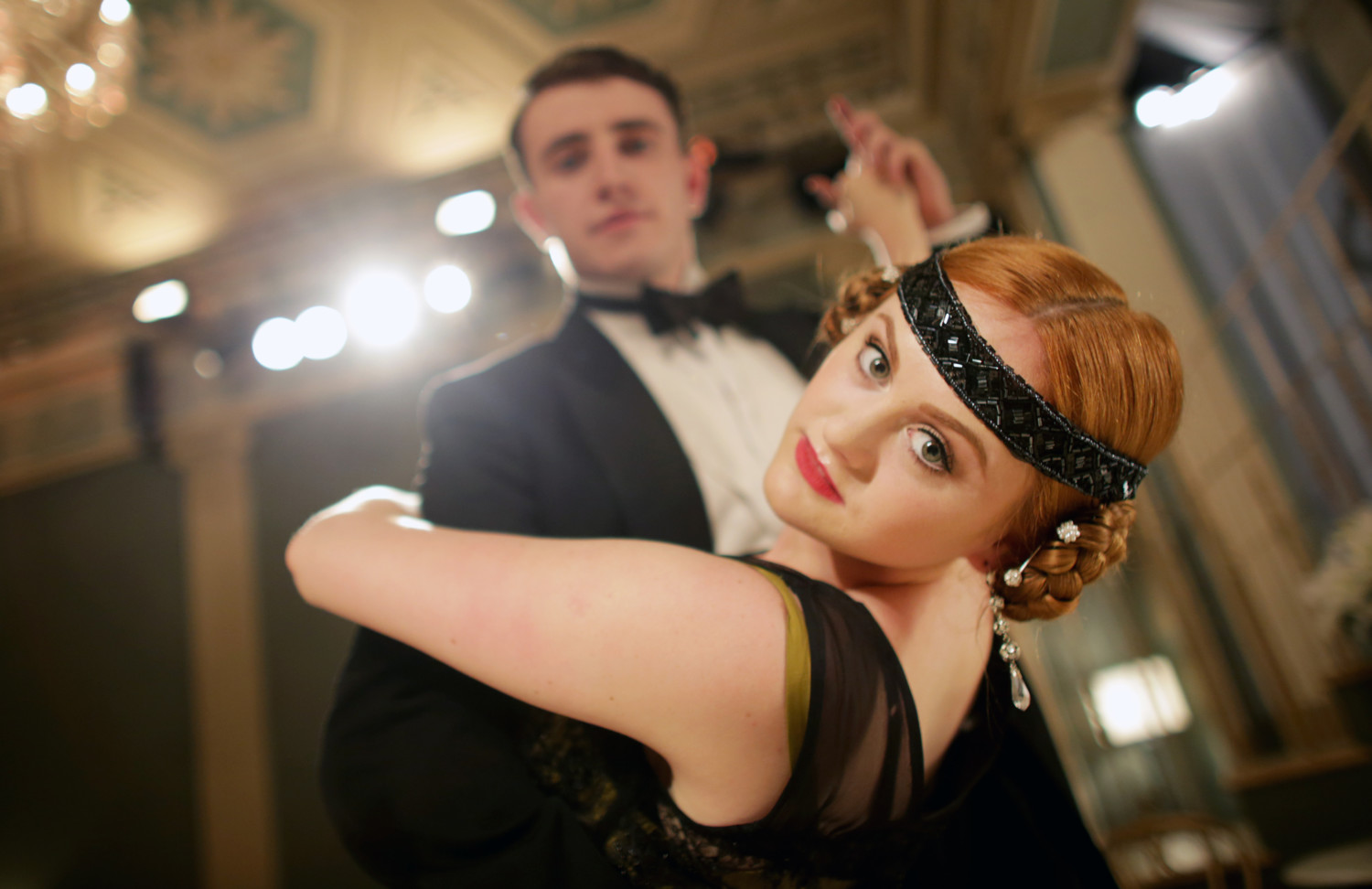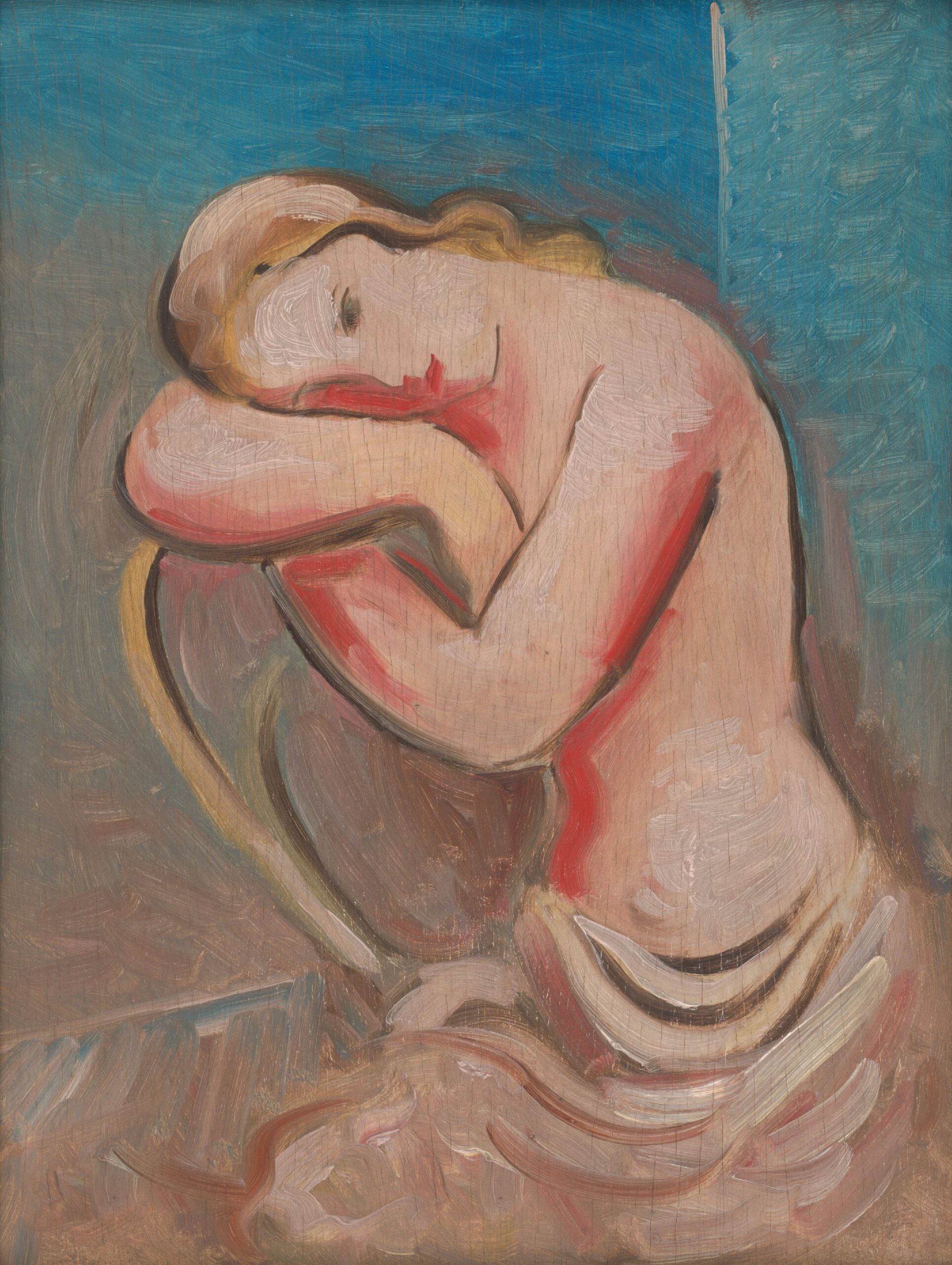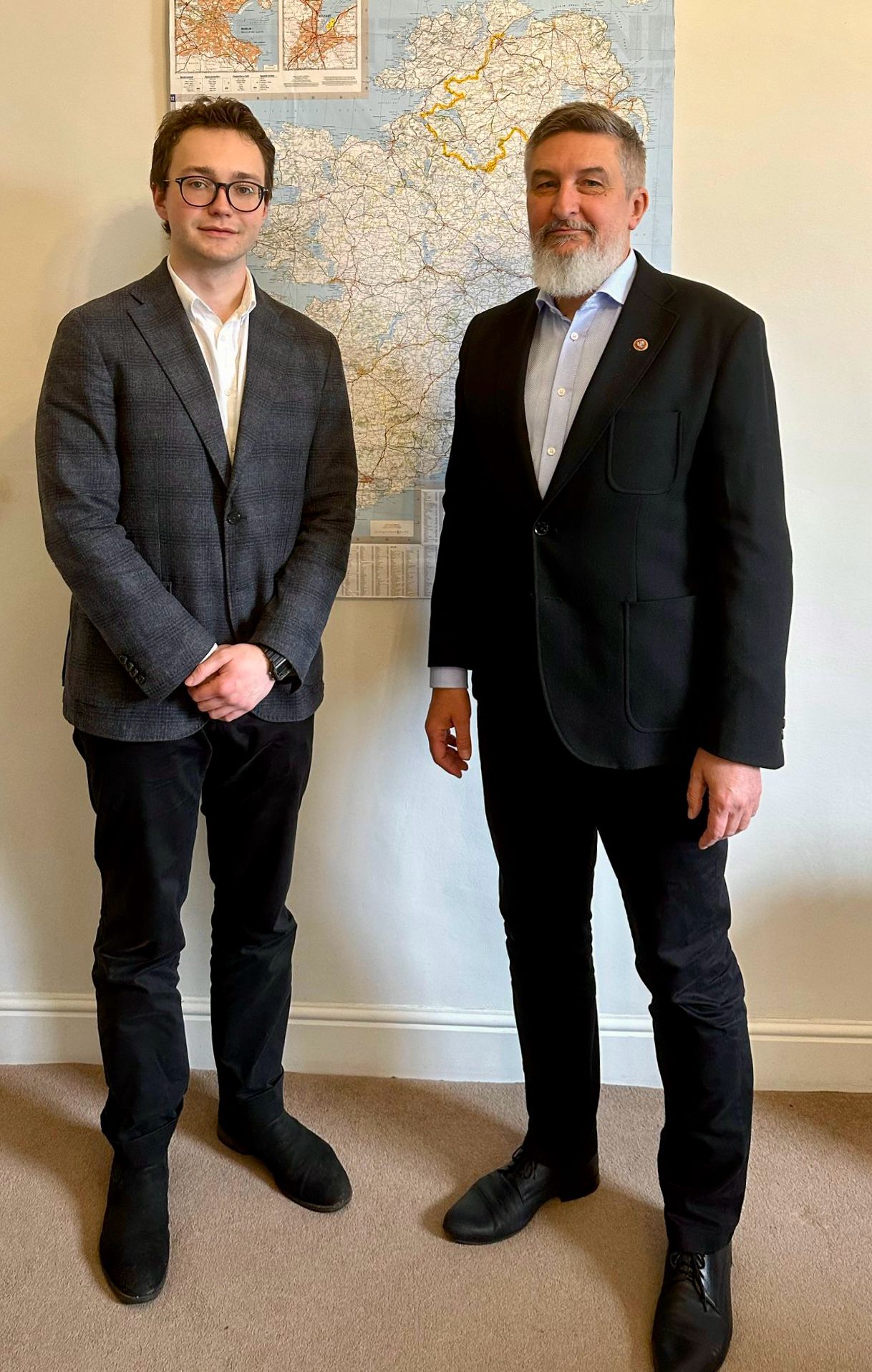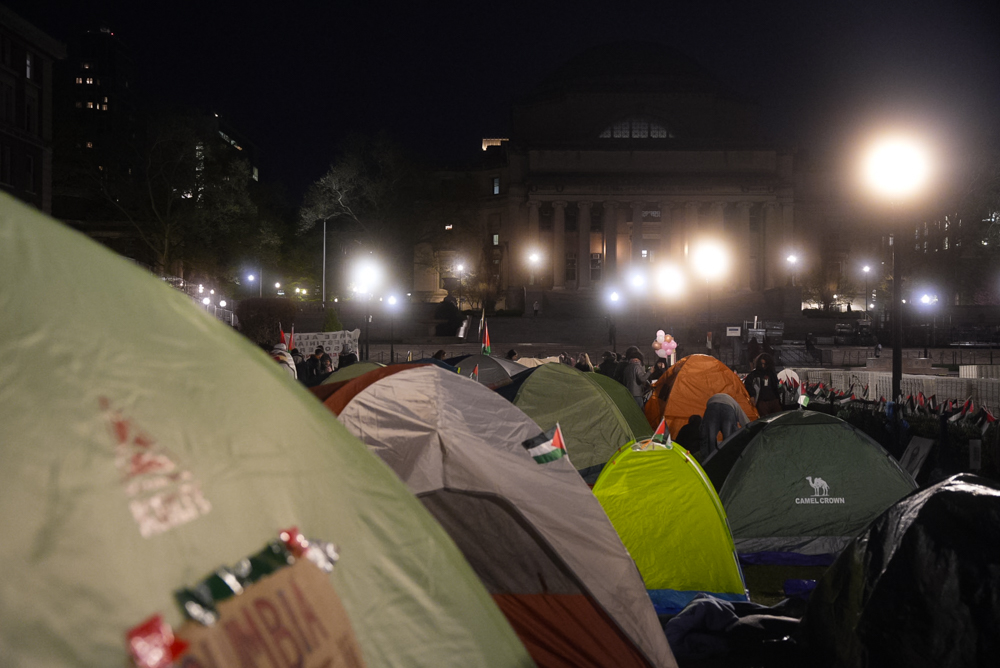
If you’re lucky enough to have a ticket for The Great Gatsby at the Gate, then you’re in for a rollicking evening, if not a revival. Not that Alexander Wright’s immersive adaptation of F Scott Fitzgerald’s novel is a watershed moment in Irish theatre, but it is one of the most thoroughly enjoyable theatrical experiences I have had in some time. The Gate theatre has been transformed for the production with seats ripped out of the auditorium, which is now the ballroom of Gatsby’s mansion, and replaced with a cocktail bar, a dance floor and an impressive marble staircase leading to other areas of the mansion. Throughout the evening audience members have the opportunity to follow members of the cast of 10 as their respective arcs develop in different locations around the Gate. Ciaran Bagnall, the set and lighting designer, has transformed the backstage area of the Gate into the inner rooms of this fine mansion. The audience are implicated as guests at one of Gatsby’s infamous parties, and are encouraged to wear period dress, which the vast majority of the audience did with aplomb.
Wright’s production relates the familiar story of Jay Gatsby, a Jazz Age millionaire, who still pines for his childhood sweetheart, the married Daisy Buchanan, and enlists the help of his neighbour, Nick Carraway, to woo her back. Familiarity with the story is not essential, but advisable, for although the novel’s major developments occur while the audience are gathered in the ballroom, many of the subplots occur simultaneously in different areas, requiring a repeat viewing to appreciate the full production. There are some strong performances, strong enough to wish occasionally that the production was more traditional and that one could better appreciate them. Marty Rea, as a spot-on Nick Carraway and Mark Huberman, as a brutish, but sympathetic, Tom Buchanan, give performances of note. Aoibheann McCann also breathes life into Myrtle Wilson, a relatively minor character in the novel, who is given a fuller arc in this adaptation.
The most important part of Wright’s adaptation of The Great Gatsby is how immersive it is, closely followed by the fact that the Gate is now open. The opening of more spaces to the audience within the Gate is paralleled by a simultaneous desire to make the theatre a more accessible place. For many people, both audience members and those in the theatre industry, the Gate seemed “closed” during the tenure of Michael Colgan, who served as director of the Gate for over 30 years. He is best remembered for world-class productions of Samuel Beckett’s and Harold Pinter’s work, bringing their challenging plays to a mass audience. However, his time at the Gate also became synonymous with a reluctance to experiment (an original play by an Irish writer has not appeared in the theatre since Mark O’Rowe’s Crestfall in 2003), a dearth of female collaborators and a series of period dramas (usually Oscar Wilde or Noel Coward), ably staged but unexciting, which were wheeled out whenever the box office needed a boost. Last year Selina Cartmell was handed the reins of the theatre and her new programme is a clever twist on the traditional Gate programming.
The Great Gatsby is a masterful first choice. It is exactly the kind of beloved text upon which the reputation of the Gate is built, but with a greater appeal to younger audiences thanks to the recent Baz Luhrmann film. By making the production immersive, a theatrical device that has largely been the remit of fringe theatre (although Anu, one of the most highly acclaimed theatre companies in Ireland, whose work is all immersive, have just been announced as artists-in-residence at the Gate) gently pushes the boundaries of the Gate’s audience who are generally perceived as older and more conservative. The dress-up aspect of the production makes what could seem esoteric a fun and frothy night out.
Cartmell follows Gatsby with Nina Raine’s Tribes. Raine is celebrated playwright in the UK but has little currency in Ireland, a possible explanation for why Tribes, a play about a deaf child in an upper-middle class English home, is being savvily re-set in a contemporary South Dublin suburb. Nancy Harris’ adaptation of Hans Christian Andersen’s The Red Shoes, directed by Cartmell herself, brings the number of female playwrights in Cartmell’s inaugural programme up to two and makes 2017 a legitimate contender for the most gender-balanced year in the history of the Gate theatre. This represents a slight divergence from the light comedic fare normally on offer at the Gate at Christmas, and the play is again re-set in an affluent Dublin suburb.
It is post-Christmas, however, when Cartmell’s programme gets really interesting. First up is John Osborne’s landmark drama Look Back in Anger. Its premiere in 1956 is widely acknowledged as one of the most significant moments in English theatre, representing a dramatic shift away from the influence of Coward, Rattigan and their contemporaries’ escapist dramas towards gritty kitchen-sink realism and a focus on the harsh realities of working class life. It is credited with beginning the “Angry Young Men” movement in British theatre. Look Back in Anger has subsequently been disarmed and slotted into the repertory of many major theatres, but it is exactly the type of play that’s stark realism shocked a mostly middle-class audience more than 60 years ago with its uncompromising look at how the other half live. Hopefully it can do so again.
A new take on Shakespeare’s The Rape of Lucrece by celebrated chanteuse Camille O’Sullivan and pianist Fearghal Murray follows Osborne’s drama for a two-week run. O’Sullivan gives voice to both Tarquin and Lucrece in a widely acclaimed and widely performed piece of music theatre which cannot but wear its title heavily. The most obviously topical programming choice of the season is Stephen Sondheim and John Weidman’s Assassins. A musical about nine people who assassinated or attempted to assassinate a sitting president of the US, there will be no prizes for guessing its relevance. Cartmell has frequently expressed her love of opera and musicals – she directed Sweeney Todd for the Gate in 2008 – and it is nice to see that her new programme reflects this breadth of theatrical interest. Rounding out Cartmell’s first year is a new stage adaptation of Roddy Doyle’s The Snapper. Doyle is one of Ireland’s most acclaimed writers and this adaptation of The Snapper has a lovely synergy to it, as the central character’s child is born in the Rotunda, which sits directly beside the Gate.
On the surface, the contents of Cartmell’s programme are unsurprising. Shakespeare, Sondheim, Fitzgerald and a playwright of the “Angry Young Men” movement, these are writers whose work is typically championed by the Gate: modern and canonical. And yet it is the particular choices that make this a highly exciting season. Shakespeare, yes, but a music theatre adaptation that prioritises the female voice within the narrative, the prickly Assassins instead of Sondheim’s more chic Company, an immersive Fitzgerald, a play by a leading Irish writer, but one whose works revolves around the working class, the intensity of Osborne rather than the cool menace of Pinter. It has also carved out a space for female practitioners and Nancy Harris and Nina Raine will make their Gate debut. Additionally, every play bar The Great Gatsby and The Snapper (whose director has yet to be announced) will be directed by a woman. Cartmell has not quite made a splash, but she is making waves.






